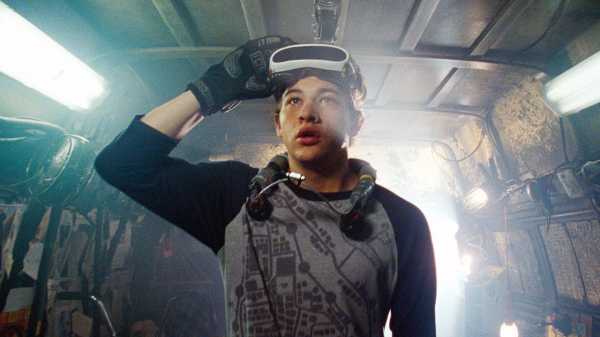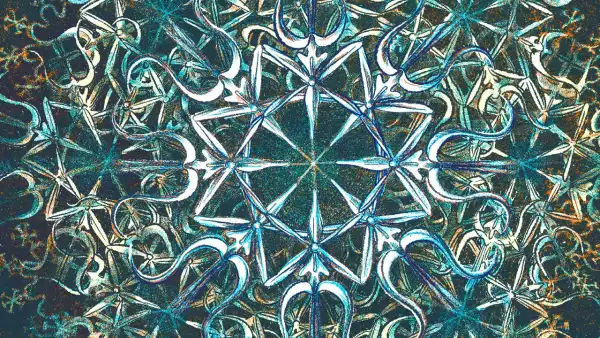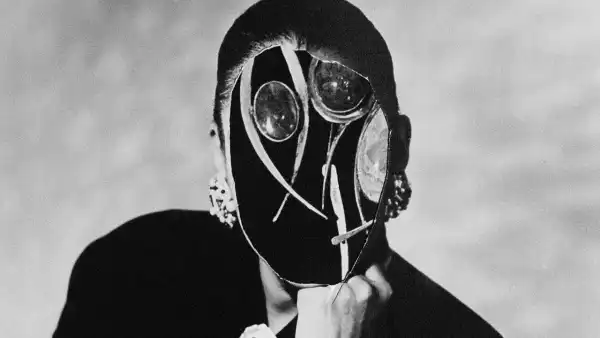
“Ready player Steven Spielberg” is not a video game focused
dystopian teenage adventure, but a horror movie, a film about spiritual zombies
whose souls were destroyed by the creators of generations official
cultural product and spat out in the form of pop-nostalgia. In
the movie, framed as a history of resistance to corporate tyranny, really
The story of tyranny in a bright perpetuates the totalitarian predator who
instructs its victims to amuse them to death—and the film
muffled horror doubles absentmindedly Spielberg to it.
In 2045, “ready player” follows Wade watts (Tye Sheridan),
orphaned teenager who lives with his aunt and her abusive Boyfriend in
a poor neighborhood in Columbus, Ohio, known as the stack. As
everyone else, Wade uses the oasis, a virtual reality program that serves
a fundamental form of entertainment, but also as a form of business
because the virtual money has won or lost there are accrued or
charged with real players Bank accounts. Wade was one of many
probably the millions who take part in the game for real stakes:
a competition to find three Easter eggs, or built-in tricks in the virtual
game.
This game-in-game-this is the posthumous legacy of the inventor and
the founder of oasis, James Halliday (mark Rylance), who left what
was released after his death. In it he says that the one who decides
three riddles to win an unbeatable prize possession and control of the oasis, and possession of his half-trillion-dollar fortune. Holliday was
more than the Creator of the dominant pop culture phenomenon: he was also
pop culture, the fanatic fandom which was centered on the end
seventies to the early nineties and it takes the solution to its mysteries turn on pop iconography and
trivia of the time (and knowledge of another field
Arcana, namely, the obsession of his life, Holliday). And here
where is the Wade—compete in the form V. R. his avatar, Parzival—reigns
higher: it is the seventies-the late-nineties pop-movies and video games
obsessive whose obsession ranges person-Holliday
the story of the life of the Creator.
Real life Wade and lonely and scary; it is only in the oasis that he has
something like a social life. There as Parzival, he has a virtual best friend and gaming buddy named Aech
(pronounced “h”), which is cumbersome mechanical genius who can not only fix
virtual machines with turn of the key, but also has a Studio in
he recreates, large-scale figures and things from the eighties and
nineties movies. (Aech is a highlight of the program is a large-scale reconstruction
The iron giant.) In the midst of racing virtual new
York in which the only obstacle is king Kong—Parzival
meets and gets with another top-flight competitor by the name of Artemis and
Roman shyly blossoms between them. Artemis, in real life, young
a woman named Samantha (played by Olivia Cooke); Aech turns out also
avatar for woman, Helen (Lena Waithe). She, Samantha, and Wade
to unite with the other two online warriors to try to win the game.
Their main rival for the top prize is a evil Corporation
Nolan Sorrento (Ben Mendelsohn), who runs the innovation of the Internet industry
(I. O. I.) and wants to capture the oasis of power and wealth (including
filling virtual spaces with ads). And Sorrento to help:
gamers who lose their virtual money stored in his real life debtors
prison (or “loyalty centre”), where they have to make VR work
its name oasis and other pop culture geeks work
overtime in their back room to feed him on the best things that
he is ignorant.
Halliday, himself a child of the eighties and nineties, drags his childhood obsessions a century forward and turns them in
core the middle of the twenty-first century pop culture. Dozens, maybe
hundreds pop the links embedded in “ready player one” genius
good-natured winks or lumber with the dominance of the Yeti (as in all
sequence that turns on the reënactment of the shining, which reduces its
a few bad theme Park memes), creating a pathetic, synthetic Echo
effect—ray trends is a nerd, which reinforces the narrow view
at the end of the twentieth century focused not on what’s important, but about what sells.
The seventies, eighties and nineties of the Holliday—
Spielberg’s fantasy world-this time without spike Lee and Jim Jarmusch or
Lizzie Borden or John Cassavetes or the Coen brothers, not to mention Martin Scorsese and Francis Ford Coppola; this is the eighties
no hip hop, no punk, no Patti Smith. No
The counterculture in Wade 2045 the world, and there’s no counterculture or
art alternatives in the imaginary world of the oasis, either.
Gently the movie remember the eighties and the nineties, in fact, repeats
exceptions and deviations; this is the version that has left Kathleen
Collins ‘ “losing ground” was not published that left Wendell B. Harris,
and Julie dash and Rachel Amodeo without the second feature, which strangled Elaine may
under the snarky comments. Icons movie nostalgia to provide grotesque
carnival of the undead, even to spew icons stolen substance
stories, links. There is a dance competition based on the “Saturday night
Fever” with a flashing disco floor lights, but without any
history is no ethnic of the movie gang war, a conflict over abortion, or
drama on sexual violence. In short, “ready player” depicts
to complete the Universe that filters out any artist or subject of a cooler
bolder, more aware than Spielberg and his films, as well as servants, and that
monolith virtual reality and nostalgia that the fuel is not
depicted as a tyrannical or terrifying aspect of the film-a dystopian
of the room. Holliday, as if desperately trying
to repel objects a Fetish of his youth, creates a world of young
mental clones, whose mind is cleared of its current problems and
filled with his own obsessions.
Instead of those who use nothing but multiplex cinema, advertising
video games, and mass-market music to fuel their imagination, “ready
One of the player” offers a welcome encouragement: fear not, for these
things offer you all the tools necessary to become master of the Universe.
But what lies under that assurance is a deadly, deadening
complacency is to stick with the most available products on the
offer, look no further than is delivered through advertising or
algorithm, and look at heroes than purveyors and
recycling machines for their self-consumption, much more profitable quiz competition.
Spielberg is very career pivots on the notion of folk art as a source
virtue. In “ready player one” Parzival insults villainous
Sorrento end Spielbergian credo: “fan knows hater”.
The film is Spielberg in the face Holliday in the end
cool dad, transformations Wade heroism in conjoined set of virtues
focuses on FILIAL piety (godliness to the adoptive father) and pop
devotion. While the coolness is unintentional mask for the base
horror: “ready player” – the story of generations of kindly and
vigorous creators, admirers of his childhood and
childhoods of children, perpetuating their own decrepit,
obsolete and decaying of the Board, consuming the brains of young people. And
fanboy doesn’t know the cult because he is in it.
One exception of a movie, its far-reaching inspiration
another twist on the paternity—here, Spielberg stifles competition with his
own big daddy, not the one he dedicated to the artistic, but one
who he chooses in the film to argue with: Orson Welles, the colossus of independence, Hollywood, and a victim of his backlash, the founder of the founder, whose work Spielberg as needs and fears, because it depends, but cannot match his reckless originality.
For “ready player one,” Spielberg Welles fights on the lawn
“Citizen Kane”; in the process, he unleashes only passionate
inspired by “ready player one” really Spielberg’s own
zomboidal imagination, this necrological inspiration.
Throughout the film, Parzival is the story of life Holliday for the tips
to solve the puzzles that he left behind; he does his research trips
in the original vaults of the so-called Holliday magazines archive
that preserves the moments of life Halliday theatre-as a hologram
in virtual dioramas behind glass walls supported by an archivist who
Parsifal, in his quest for valuable knowledge, directs
fast-forward, freeze-frame or rewind. It’s like the scene in the library
“Citizen Kane”, where the memoirs of the banker Thatcher come to life, and, in
correction for “ready player” then this one time when
Pulses Spielberg to make the best of it, where his ideas burst beyond
his limited imagination nostalgic aspirations Halliday and try
probe something that intrigues, frightens and eludes him: the secrets of
Creator more, more mysterious, more restless than he is.
(There’s even a hint of wells ‘ “Mr. Arkadina” is embedded in the concept:
guilt nobleman, who committed himself researched.) As
it turns out that Spielberg can only go so far with that idea, and he will leave
his own daring fantasies at the starting gate. Your vision
Crises and conflicts Holliday proves trivial, sterile, uncreative—how
proved when, at the denouement of the film, Wade unleashes with
cringe-worthy gooeyness, the word “rosebud.”
Sourse: newyorker.com






